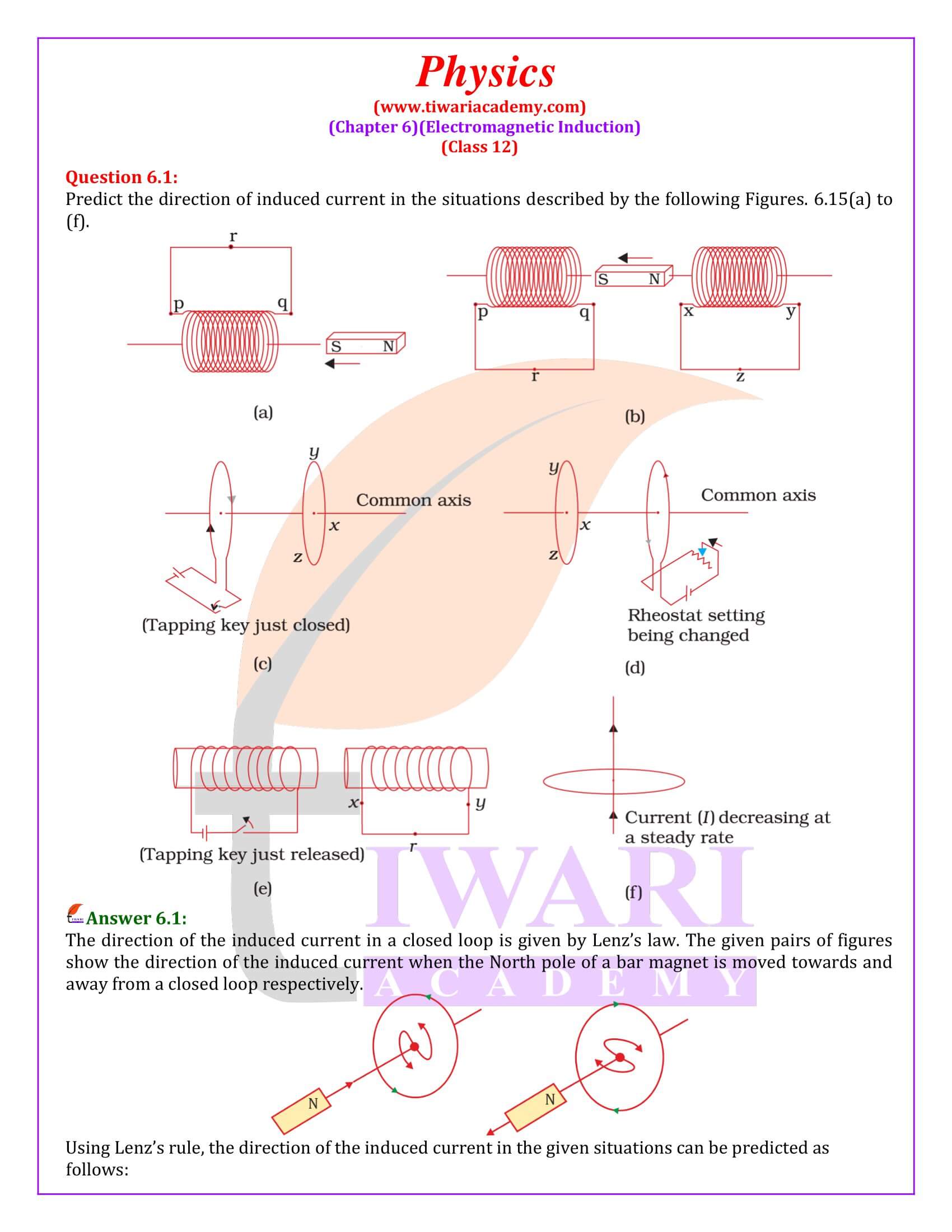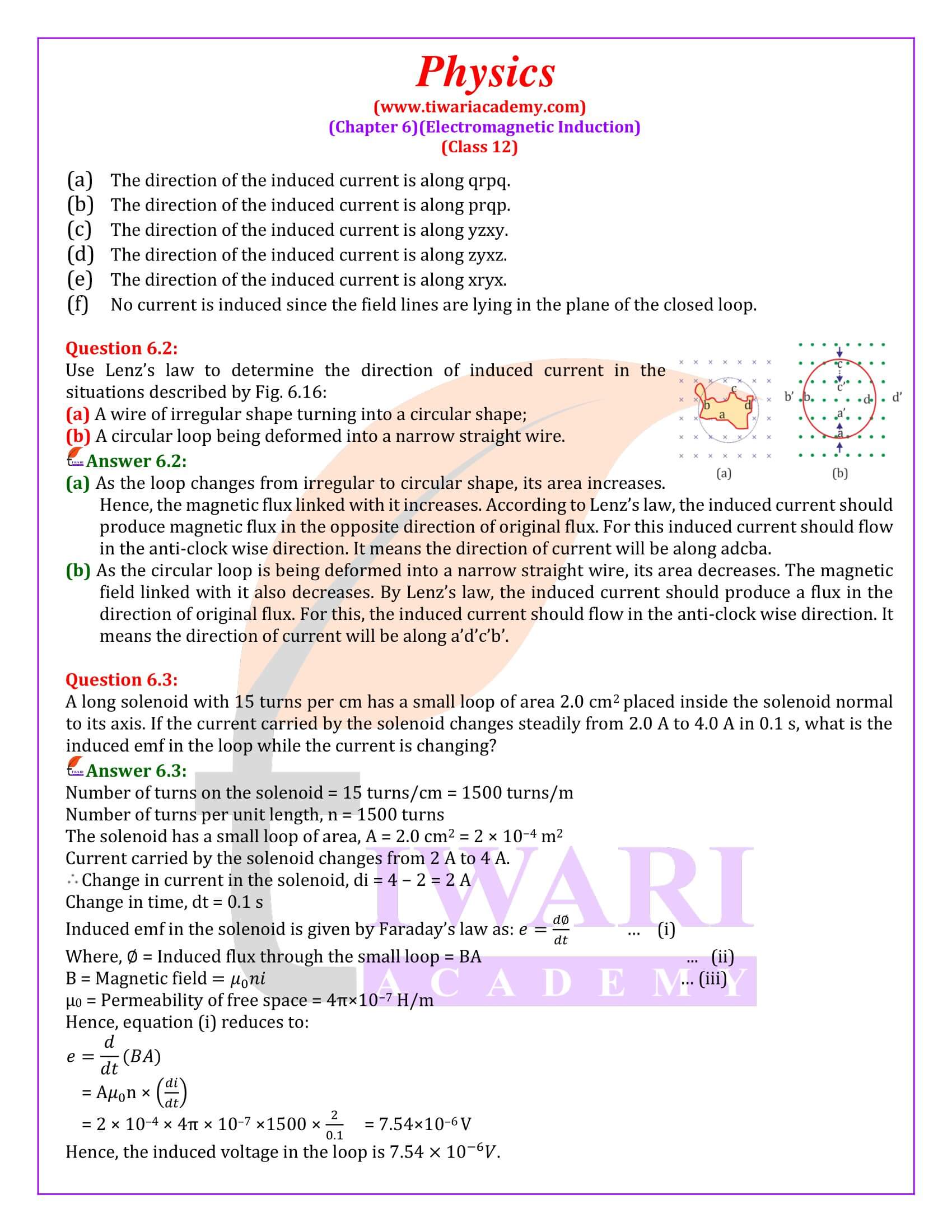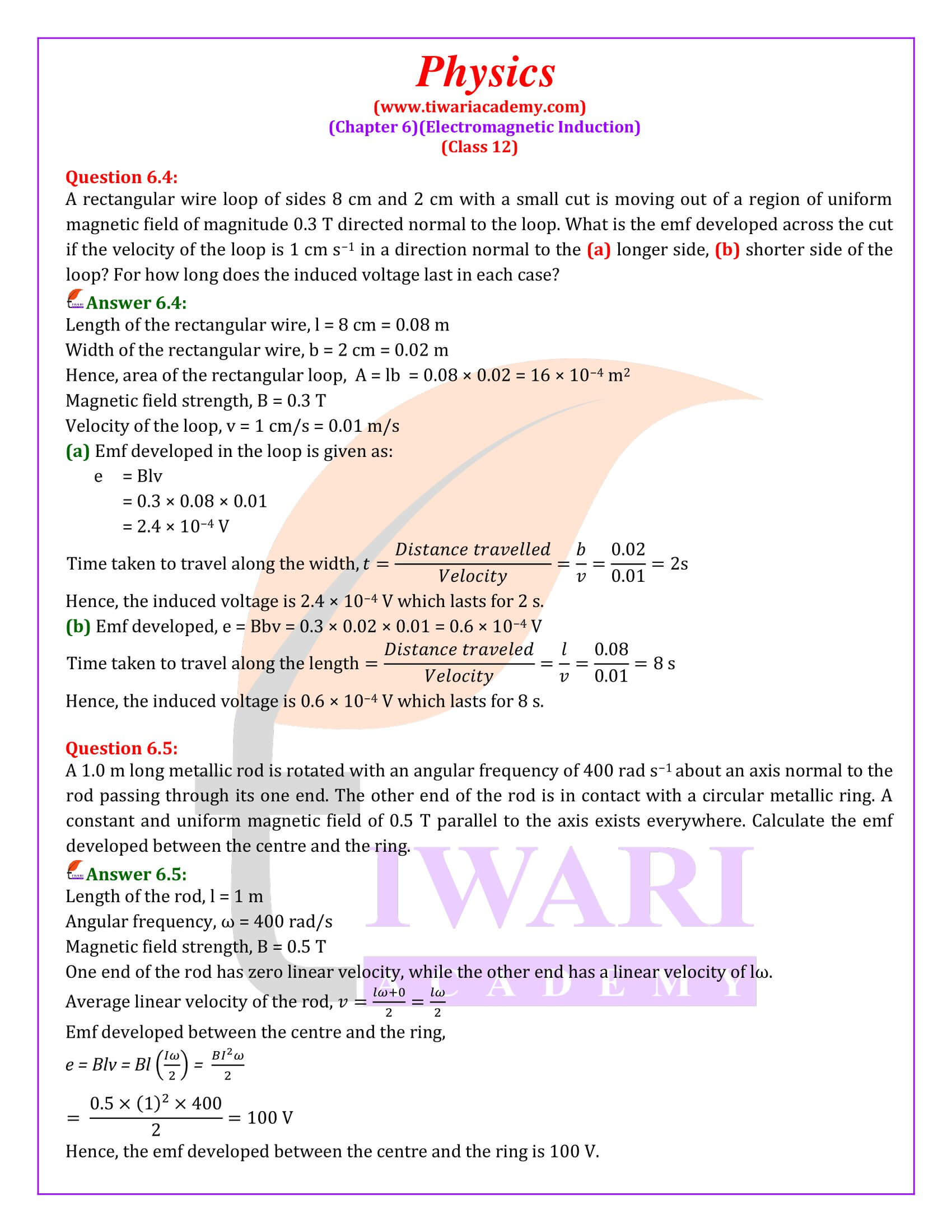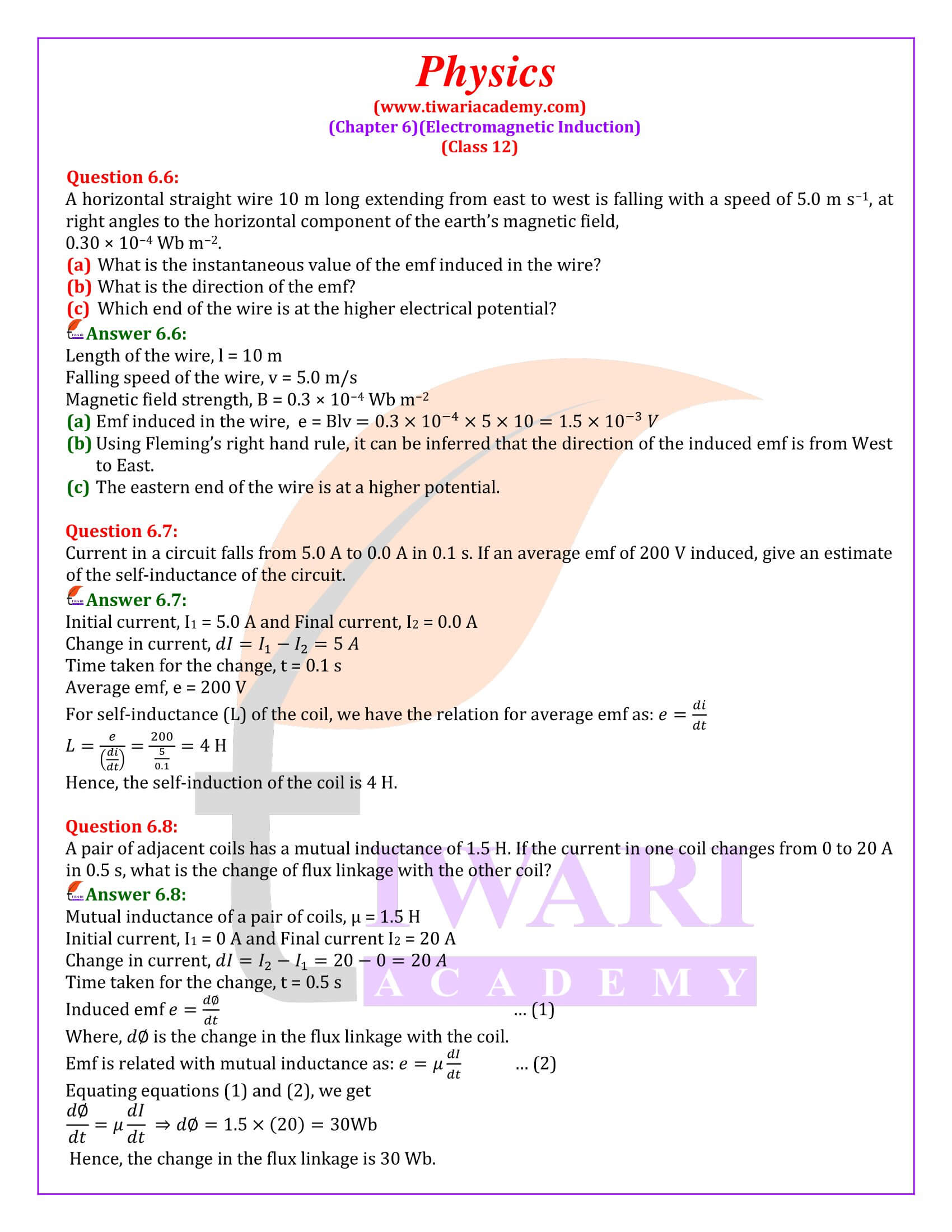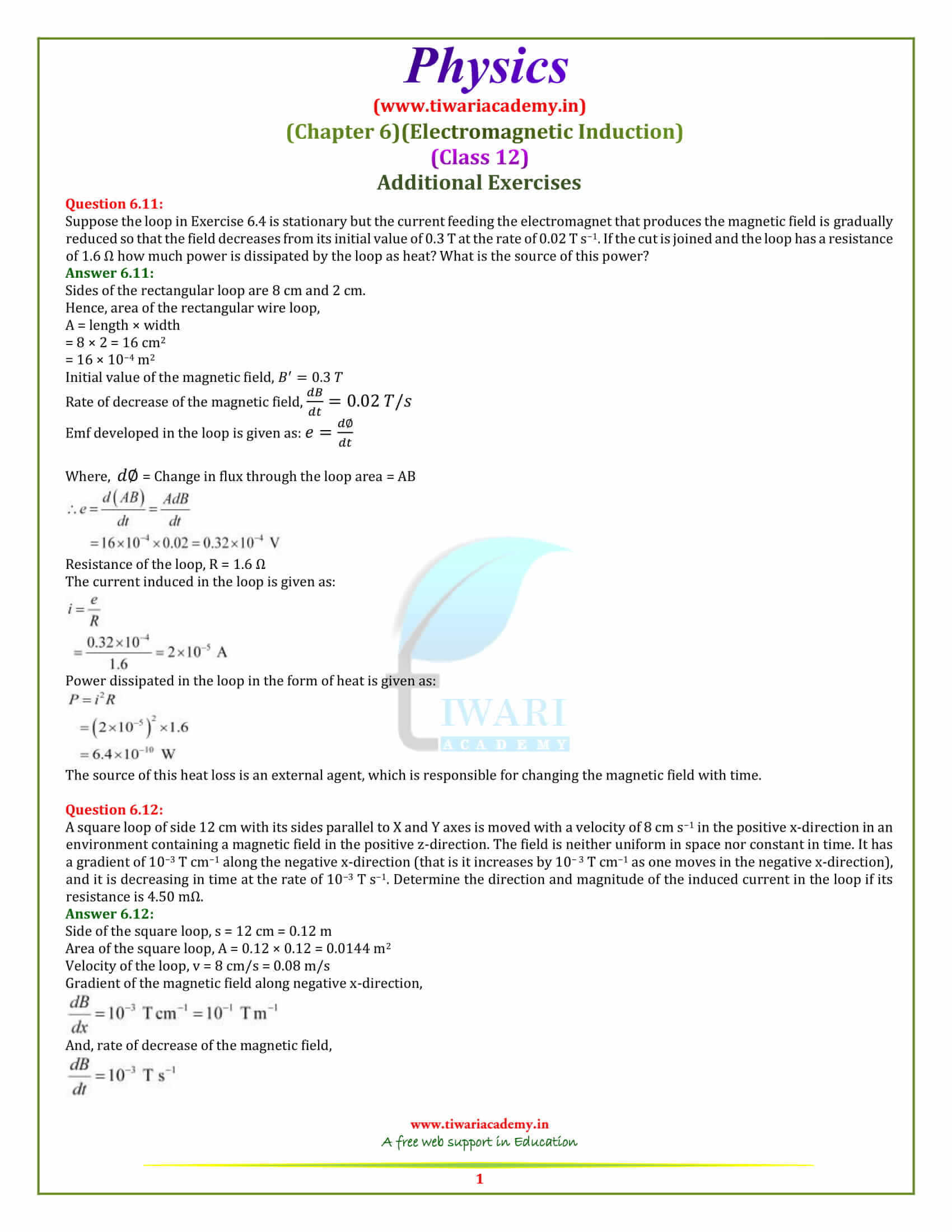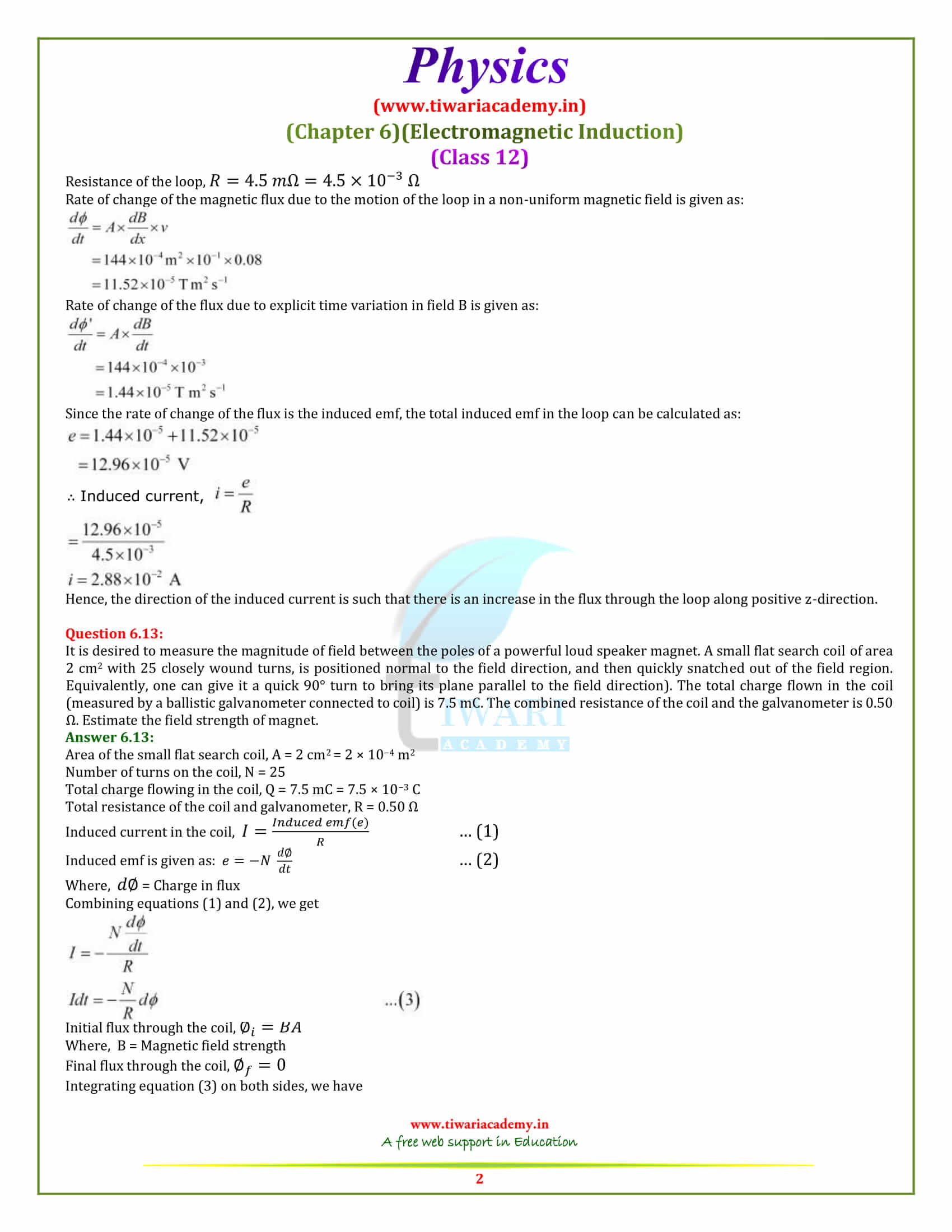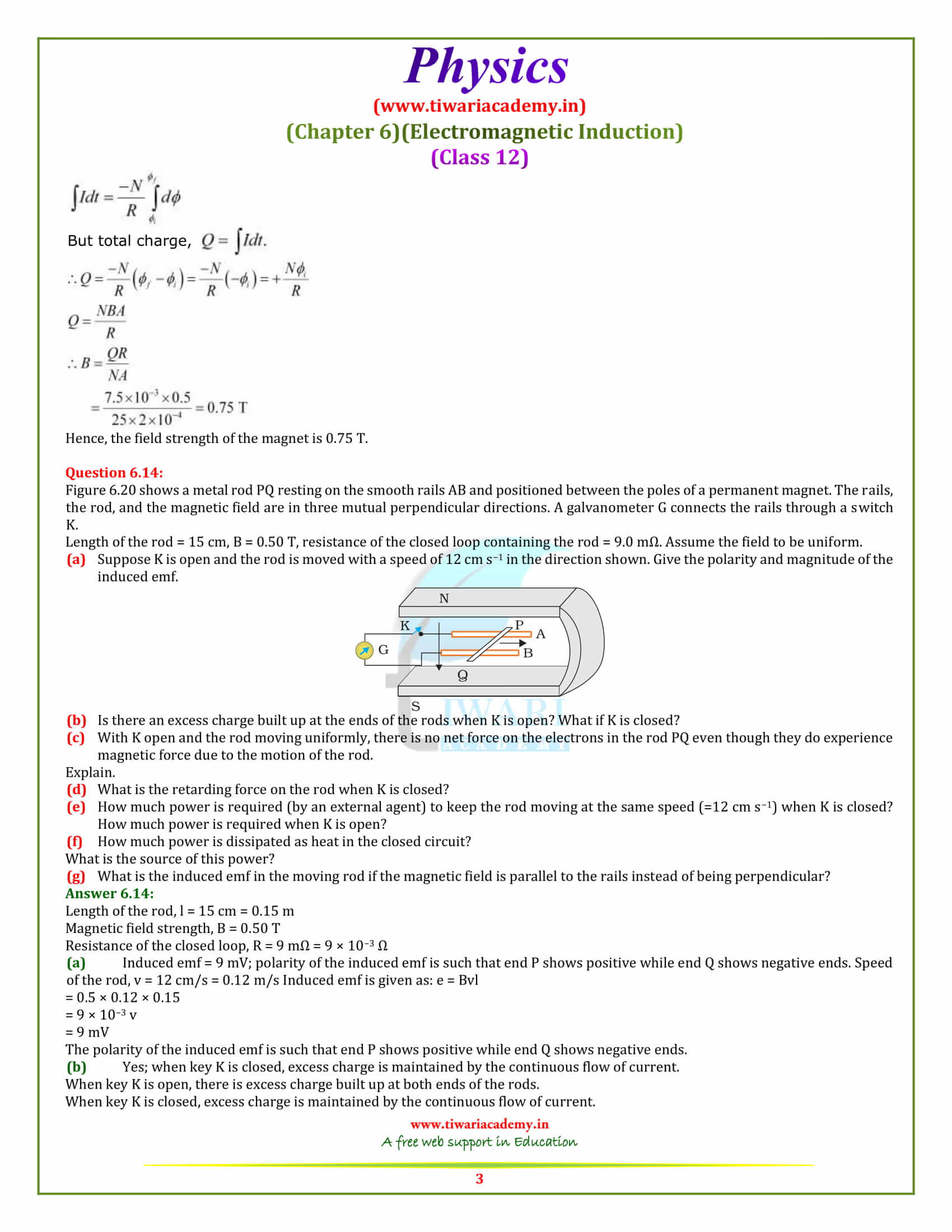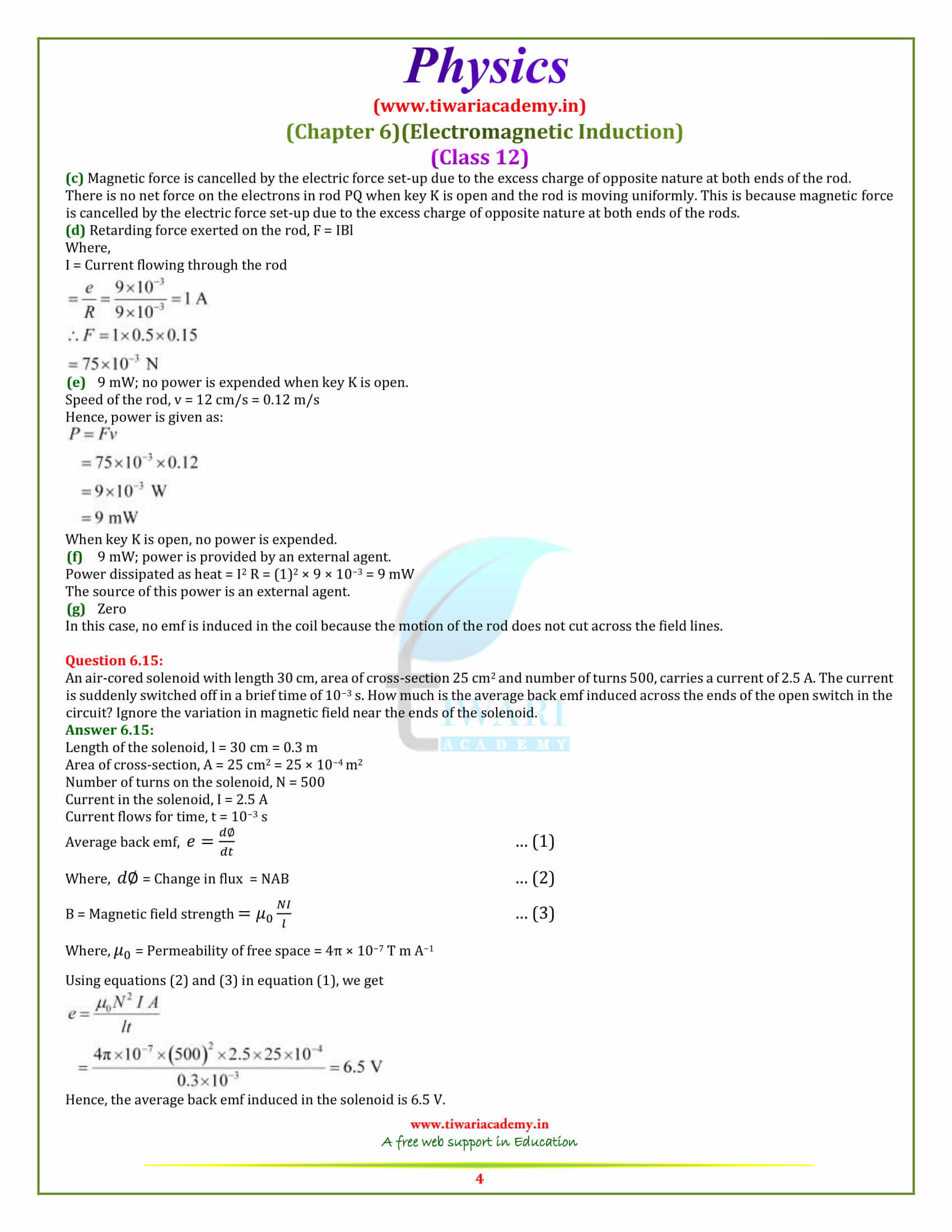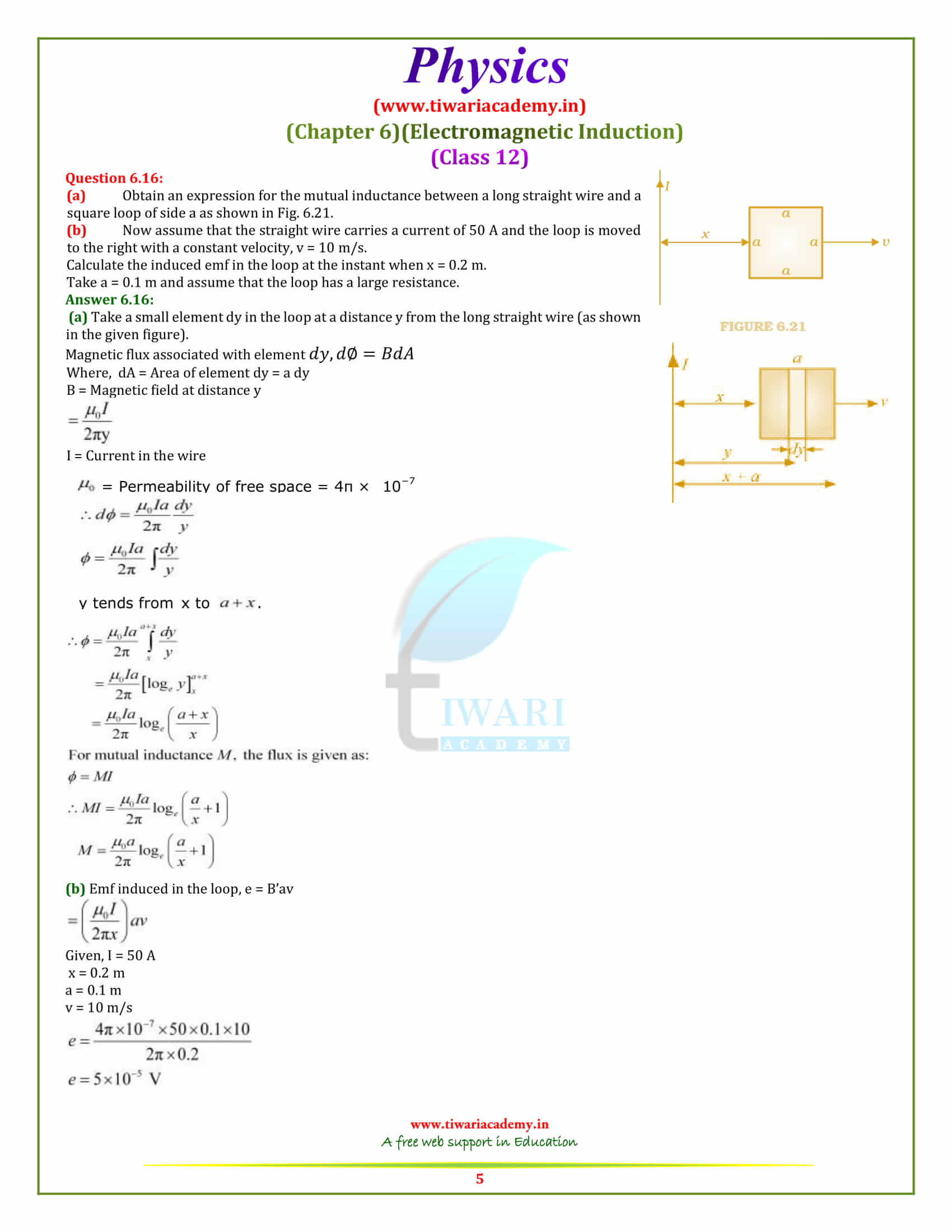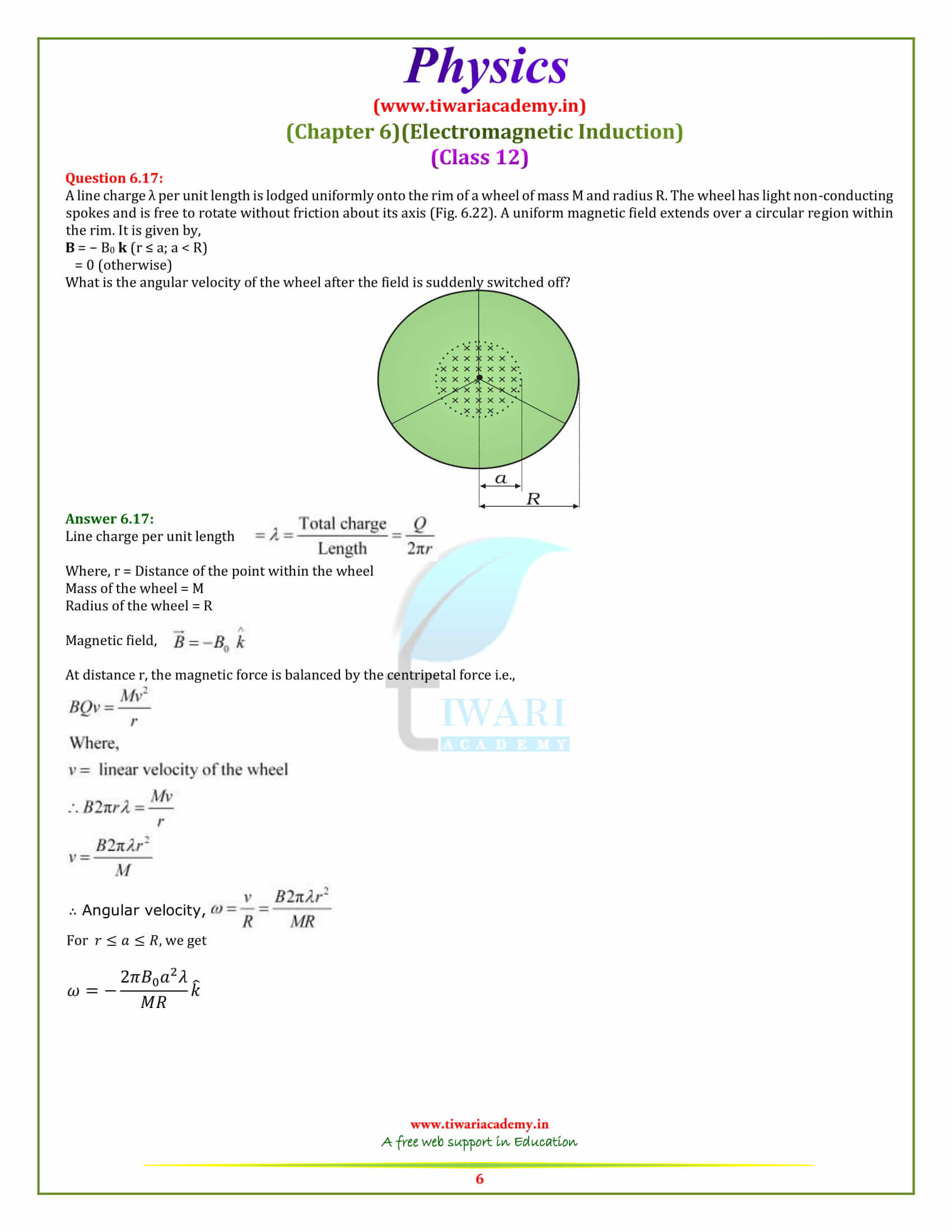NCERT Solutions for Class 12 Physics Chapter 6 Electromagnetic Induction in English and Hindi Medium with Additional Exercises in PDF for session 2024-25. Now books as well as syllabus for academic year 2024-25 is revised and additional exercises excluded from curriculum.
NCERT Solutions for Class 12 Physics Chapter 6
Chapter 6 Electromagnetic Induction Solutions
- Class 12 Physics Chapter 6 Exercises Solutions
- 12th Physics Chapter 6 Additional Exercises (Not in Syllabus)
- Class 12 Physics Chapter 6 Solutions in Hindi
- Class 12 Physics NCERT Book Chapter 6
- Class 12 Physics Revision Book Chapter 6
- Revision Book Answers
- Class 12 Physics Chapter 6 Revision Notes 1
- Class 12 Physics Chapter 6 Revision Notes 2
- Visit to 12th Physics Main Page
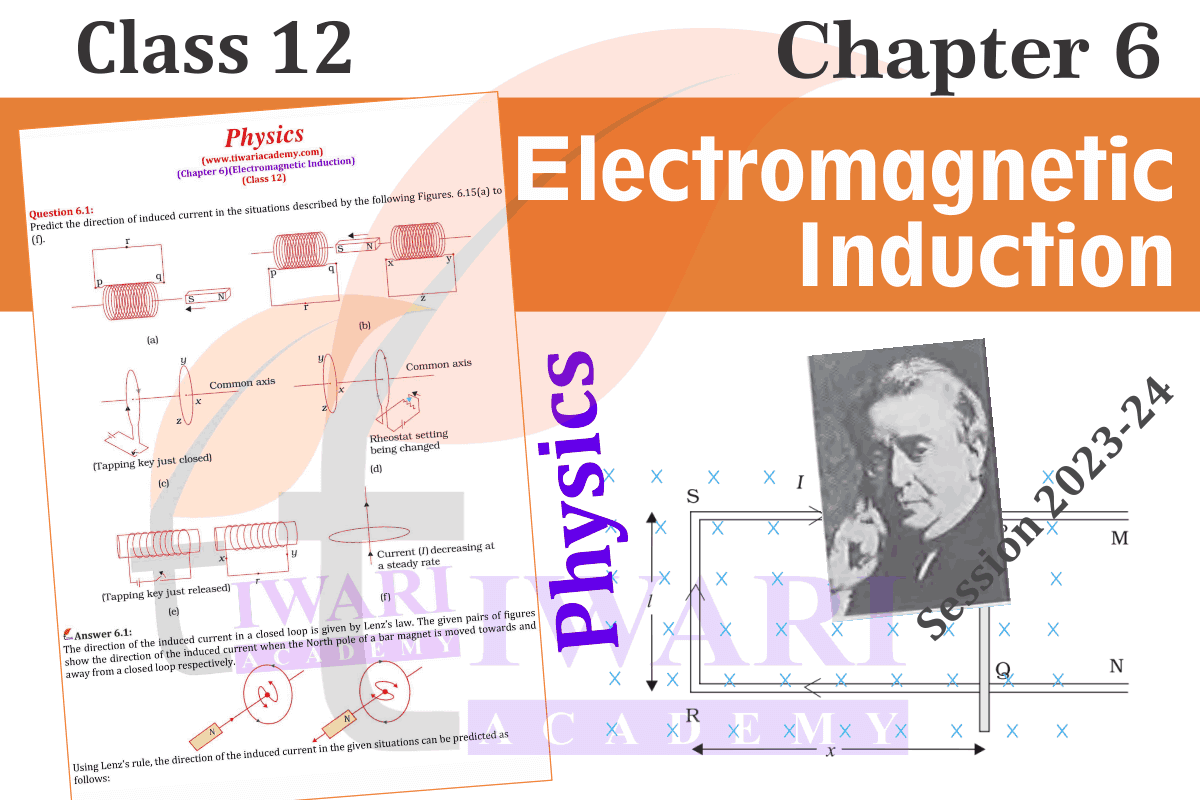
Download Offline Apps based on latest NCERT Books for offline study. Visit to discussion forum to share your knowledge with the other users.
| Class: 12 | Physics |
| Chapter 6: | Electromagnetic Induction |
| Content: | Exercises and Extra Practice Questions |
| Mode of Content: | Images, PDF, Text and Videos |
| Academic Session: | 2024-25 |
| Medium: | Hindi and English |
Class 12 Physics Chapter 6 Solutions in English
NCERT Solutions for Class 12 Physics Chapter 6 Electromagnetic Induction exercises are given below to use it online or download in PDF free. NCERT Solutions 2024-25 are updated according to latest CBSE Syllabus. Download Offline apps based on latest NCERT Books 2024-25.
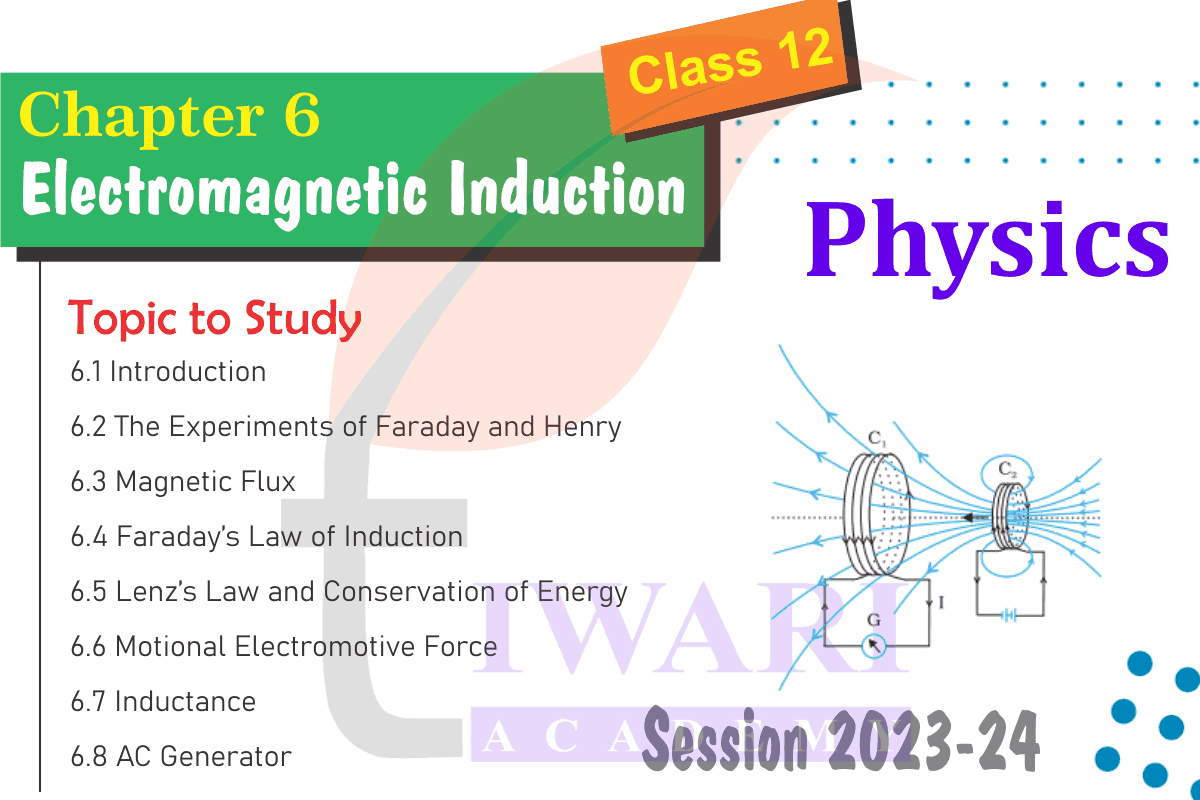
Important Questions for practice
1. How will a diamagnetic, paramagnetic and a ferromagnetic material behave when kept in a non-uniform external magnetic field? Give two examples of each of these materials. Name two main characteristics of a ferromagnetic material which help us to decide suitability for making. (i) Permanent magnet (ii) Electromagnet.
2. Write the principle, working of moving coil galvanometer with the help of neat labelled diagram. What is the importance of radial field and phosphor bronze used in the construction of moving coil galvanometer?
3. Write two differences in each of resistance, reactance and impedance for an ac circuit. Derive an expression for power dissipated in series LCR circuit.
4. A uniform wire is bent into one turn circular loop and same wire is again bent in two turn circular loop. For the same current passed in both the cases compare the magnetic field induction at their centres.
[Answer: Increased 4 times]
5. A short bar magnet placed with its axis at 30° with an external field 1000G experiences a torque of 0.02 Nm. (i) What is the magnetic moment of the magnet. (ii) What is the work done in turning it from its most stable equilibrium to most unstable equilibrium position? [Answer: (i) 0.4 Am2; (ii) 0.08 J]
Questions from Board Papers
1. A 1.5 μF capacitor is charged to 57V. The charging battery is then disconnected, and a 12 mH coil is connected in series with the capacitor so that LC Oscillations occur. What is the maximum current in the coil? Assume that the circuit has no resistance.
2. An electric bulb is connected in series with an inductor and an AC source. When switch is closed and after sometime an iron rod is inserted into the interior of inductor. How will the brightness of bulb be affected? Justify your answer.
3. How does mutual inductance of a pair of coils kept coaxially at a distance in air change when
(i) the distance between the coils is increased? (ii) an iron rod is kept between them?
4. In an inductor of inductance L, current passing is I0. Derive an expression for energy stored in it. In what forms is this energy stored?
5. In an LC circuit, resistance of the circuit is negligible. If time period of oscillation is T then:
(i) at what time is the energy stored completely electrical (ii) at what time is the energy stored completely magnetic (iii) at what time is the total energy shared equally between the inductor and capacitor.
Important Questions on 12th Physics Chapter 6
A jet plane is travelling towards west at a speed of 1800 km/h. What is the voltage difference developed between the ends of the wing having a span of 25 m, if the Earth’s magnetic field at the location has a magnitude of 5 × 10⁻⁴ T and the dip angle is 30°.
Speed of the jet plane, v = 1800 km/h = 500 m/s Wing span of jet plane, l = 25 m Earth’s magnetic field strength, B = 5.0 × 10⁻⁴ T Angle of dip, δ = 30° Vertical component of Earth’s magnetic field, BV = B sin δ = 5 × 10⁻⁴ sin 30° = 2.5 × 10⁻⁴ T Voltage difference between the ends of the wing can be calculated as: e = (BV) × l × v = 2.5 × 10⁻⁴ × 25 × 500 = 3.125 V Hence, the voltage difference developed between the ends of the wings is 3.125 V.
A horizontal straight wire 10 m long extending from east to west is falling with a speed of 5.0 m s⁻¹, at right angles to the horizontal component of the earth’s magnetic field, 0.30 × 10⁻⁴ Wb m⁻². What is the instantaneous value of the emf induced in the wire?
Length of the wire, l = 10 m Falling speed of the wire, v = 5.0 m/s Magnetic field strength, B = 0.3 × 10⁻⁴ Wb m⁻² Emf induced in the wire, e = Blv = 0.3 × 10⁻⁴ × 5 × 10 = 1.5 × 10⁻³ V
A circular coil of radius 8.0 cm and 20 turns is rotated about its vertical diameter with an angular speed of 50 rad s⁻¹ in a uniform horizontal magnetic field of magnitude 3.0×10⁻² T. Obtain the maximum and average emf induced in the coil.
Max induced emf = 0.603 V Average induced emf = 0 V Max current in the coil = 0.0603 A Average power loss = 0.018 W (Power comes from the external rotor) Radius of the circular coil, r = 8 cm = 0.08 m Area of the coil, A = πr² = π × (0.08)² m² Number of turns on the coil, N = 20 Angular speed, ω = 50 rad/s Magnetic field strength, B = 3 × 10⁻² T Resistance of the loop, R = 10 Ω Maximum induced emf is given as: e = Nω AB = 20 × 50 × π × (0.08)² × 3 × 10⁻² = 0.603 V The maximum emf induced in the coil is 0.603 V.
